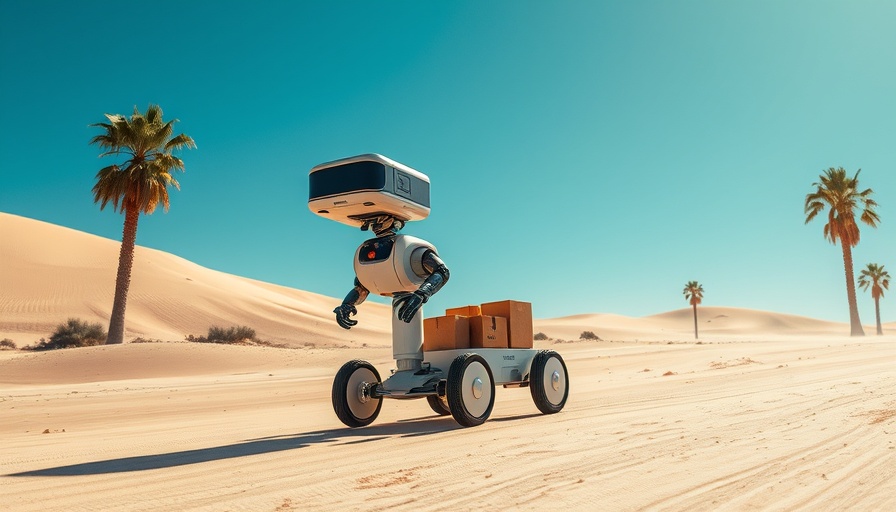
Cartken's New Direction: From Last-Mile Delivery to Industrial Robotics
Autonomous robotics startup Cartken is making waves by shifting its focus from delivering food to revolutionizing the industrial sector with its innovative robots. After years of meticulously developing delivery robots for congested urban environments and college campuses, the company’s co-founder and CEO, Christian Bersch, recognized the untapped potential of applying their technology in factories and laboratories. This pivot into industrial applications appears to hold the promise of significant advancements for companies looking to optimize their operations.
Why the Shift Happened: Industry Demand
The catalyst for Cartken's strategic pivot came not just from a desire for growth but rather from industry demand. Bersch recalls that he frequently received inquiries from companies interested in utilizing their existing delivery robots for industrial purposes. ‘When companies started reaching out about using their robots in factories and labs, we took a closer look,’ he explained. This feedback revealed a strong market need for enhanced efficiency in material movement within production lines. Bersch noted, “Sometimes, there’s even more direct value to companies optimizing their material flows or their production flows.” Recognizing this necessity fueled Cartken's choice to deepen its involvement in industrial robotics.
Initial Success in Industrial Trials
In an impressive early win, Cartken secured its first significant industrial client, ZF Lifetec, a German manufacturing giant. This partnership came when ZF Lifetec began using Cartken’s robots—initially built to transport food—first for moving production samples. Bersch highlighted that this robot quickly turned into their busiest due to its utility in a factory setting. ‘That’s when we said, hey, there’s real use cases and real market need behind it,’ Bersch remarked, emphasizing the practical implications of their technology developments.
Technology That Adapts
Cartken’s robots, which resemble an Igloo cooler on wheels and can carry up to 44 pounds, were initially designed for outdoor campus environments. However, transitioning their technology for industrial uses was surprisingly seamless. The AI that powers these robots had been trained on vast datasets from their experience in food delivery, enabling the devices to handle varied terrains and conditions effectively. This foundation allows the company to leverage its technology in multiple sectors, thus broadening its market scope.
The Broadening Landscape of Robotics
Cartken’s strategic pivot reflects a larger trend in the technology landscape, where companies are increasingly applying solutions developed within one domain to solve problems in another. In recent years, various tech firms have sought to repurpose their innovations for different industries. For example, robotics designed for customer service are now being utilized in healthcare environments, while logistics technology is finding applications in manufacturing. Such cross-industry innovation highlights the versatility of emerging technologies and the growing need for companies to adapt quickly to market demands.
Future Opportunities in Industrial Robotics
As Cartken forges forward in the industrial sector, it stands to benefit from numerous opportunities. With an increasing focus on efficiency and automation in industries worldwide, Cartken's robots are poised to play a pivotal role. Experts suggest that as the workforce continues to confront challenges such as labor shortages and the aftermath of the COVID-19 pandemic, technologies that enhance productivity will be vital. Robotics solutions like those offered by Cartken could lead to significant cost savings and improved operational efficiency, positioning them well for future growth in the industrial sector.
Conclusion: The Future of Robotics Is Here
With its strategic pivot to focus on industrial robots, Cartken exemplifies emerging trends in technology development. Their innovative approach of transitioning existing systems into new markets not only meets rising demand but also highlights the adaptable nature of robotics. As they continue to explore additional applications, the potential for technological advancements in various industries remains boundless. Companies and stakeholders alike should keep a close watch on Cartken and the future of robotics—it's a changing landscape fueled by innovation.
 Add Row
Add Row  Add
Add 



Write A Comment